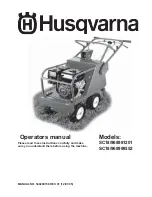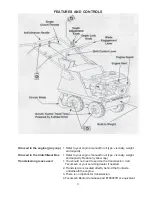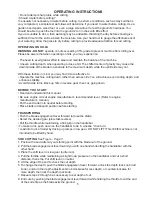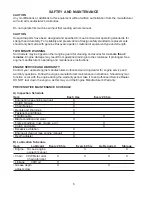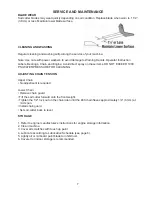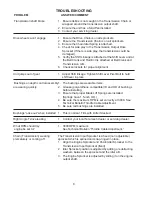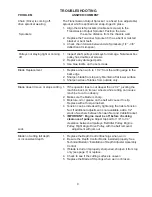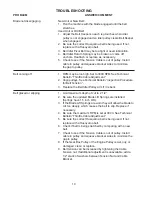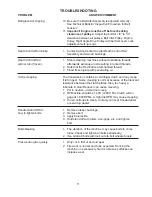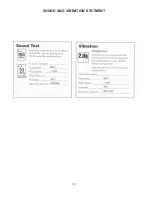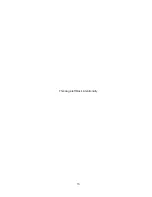
10
PROBLEM
ANSWER/COMMENT
Blade not disengaging
New Unit or New Belt:
1. Run the machine with the blade engaged until the belt
stretches.
Used Unit or Old Belt:
1. Adjust the Belt Keeper so each leg touches when idler
pulley is not engaged and so idler pulley clears Belt Keeper
when engaged.
2. Be sure the correct Husqvarna belt is being used. If not,
replace with a Husqvarna belt.
3. Belt Idler Pivot Bolt may be too tight or need lubrication.
4. Belt Idler Return Spring may be broken or came off
anchors. Reattach or replace as necessary.
5. Check to see if the Tension Cable is out of pulley. Install
cable in pulley and squeeze bracket sides to minimize
the gap to pulley.
Belt coming off
1. RPM may be too high. Set to 3000 RPM See Technical
Bulletin “Throttle Cable Adjustment.”
2. Align pulleys. See Technical Bulletin “Inspection Procedure
for Belt Tension “.
3. Replace the Belt Idler Pulley Arm if it is bent.
Belt glazed or slipping
1. Limit maximum depth of cut to 2 1/2”.
2. Be sure the updated Blade Lift Springs are installed.
(Springs have 1.5 inch OD.)
3. If the Blade Lift Springs are worn they will allow the blade to
cut too deeply, which causes the belt to slip. Replace if
necessary.
4. Be sure the maximum RPM is set at 3000. See Technical
Bulletin “Throttle Cable Adjustment.”
5. Be sure the correct Husqvarna belt is being used. If not,
replace with a Husqvarna belt.
6. Check if belt is being stretched by comparing with a new
belt.
7. Check to see if the Tension Cable is out of pulley. Install
cable in pulley and squeeze bracket sides to minimize the
gap to pulley.
8. If the Gear Box Pulley or the Engine Pulley is wet, oily, or
damaged, clean or replace.
9. Belt tension can be increased by tightening the Cable
Tension nut. If additional adjustment is unavailable, add a
1/2” stack of washers between Tension Nut and Cable
Bracket.
TROUBLESHOOTING

